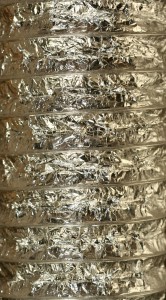URGENT!
Due to the weather, we are experiencing intermittent power outage and loss of internet. Please expect delays and or rescheduling of appointments during this time. We will reach out to you as soon as we can. Stay warm and stay safe!
We know you care about keeping your family safe. One way to keep your family safe while at home is to minimize the likelihood of a deadly chimney fire. One way to minimize this risk is to make sure you do not allow creosote to accumulate.

Creosote is no laughing matter. The professionals at Lords Chimney can provide you with a wealth of information and service to give you that added peace of mind!
For homeowners with chimneys, there is one other thing that they worry about specifically – creosote. According to our team of experts here at Lords Chimney, more than 70% of the inquiries and concerns we receive from our loyal customers involve creosote in some form or fashion. So what exactly is creosote anyway?
If you look online you’ll see a lot of definitions filled with scientific jargon that would just confuse you a lot more than you may already be. But the definition from the Agency for Toxic Substances and Disease Registry describes and defines creosote in a simple and uncomplicated way. According to the ATSDR, creosote is basically the chemical byproduct of burning. There are different varieties of creosote. There’s the Wood, Coal Tar Pitch, Coal Tar Pitch Volatiles and Coal Tar. But basically they are all referred to collectively as creosote.
Although seemingly harmless during the beginning stages, creosote can quickly become extremely dangerous when left alone. You see, since it is a byproduct of burning, this means that it would constantly be produced whenever there’s burning of any kind in your chimney system. Once it is produced, it sticks to various parts of the fireplace and chimney. If it accumulates further, it becomes this thick volatile layer that is one of the number one culprits of chimney and house fires.
The best thing we can do to prevent things from getting out of hand is to properly maintain your chimney. Schedule regular inspections and cleanings to make sure that creosote build-up never gets a chance to reach threatening levels, which, in turn, would guarantee safety for your home and your family. So what are you waiting for? Pick up a phone and schedule an appointment right now. You can count on us for quality and dependable chimney and fireplace services. Lords Chimney is ready to help!
It’s very important to keep up with dryer vent cleaning, as the built up lint is a fire hazard that endangers your house and everyone in it. Call Lords Chimney to schedule an inspection and cleaning of your dryer vents to help you maintain a safer and more efficient dryer.
The chimney liner of a fireplace is one of the most critical components of the operating system. According to the CSIA, problems in your chimney’s flue can present serious risks to your home and family, as it is no longer able to perform its primary function: to safely contain and vent the products of combustion to the outside of your home.
The work we do at Lords Chimney varies, from installation, maintenance and repairs on chimney systems to dryer vent installation and cleaning.
That work all has some common ground, though: We’re caring for venting systems to help our clients enjoy safer and more efficient venting, better appliance performance and cleaner air.

Without regular dryer vent cleaning, lint can build up in your vents and begin to constrict the airflow, allowing heat to build up to dangerous levels, and creating the potential for a dangerous dryer fire.
Like your fireplace or stove, your dryer is a heating appliance. And like your chimney, your dryer vent system is working to vent the dangerous byproducts coming from that appliance.
Over time, your chimney develops creosote deposits that can hinder its ability to vent properly. In your dryer vents, lint creates a similar potential for blockage.
Without regular dryer vent cleaning, lint can build up in your vents and begin to constrict the airflow, allowing heat to build up to dangerous levels, and creating the potential for a carbon monoxide leak. Since carbon monoxide is colorless and odorless, it can be an invisible cause of illness — even death. (Which is why we also stress the importance of having a properly functioning carbon monoxide detector installed in your home.)
Lords Chimney technicians use state-of-the-art tools to properly clean your dryer vents and ensure complete and thorough results — we use video cameras to make sure those vents are cleared of lint, and gauges to check for proper air flow. And proper airflow means that dangerous byproducts like carbon monoxide are moving through the vent and out of your home, not into your living space.
If you have any concerns about the air quality in your home — related to your chimney or dryer vents — Lords Chimney can help. Give us a call to make an appointment with our CSIA-certified technicians!
Before we talk about firebox replacement , let’s get into what a firebox is. When you stack up your wood and build your fire in your fireplace, the area that’s holding that fire — fittingly, shaped a lot like a box — is what we refer to as the firebox.
Whether you have a masonry or factory-built fireplace, that firebox was made with materials that were designed to hold up to years of high heat (and since the firebox really does bear the brunt of the heat of your fire, they need to be built that way). Masonry fireboxes are constructed out of firebrick, and those firebricks are made with a refractory material that’s highly resilient when exposed to extreme temperatures. Factory-built or prefabricated fireplaces are largely built out of metal, but the firebox itself is bolstered by refractory panels on the bottom and sides — which also offer that durability and strength when faced with the high temperatures of repeated fires.
As strong as fireboxes are designed to be, over time, it’s not unusual for damage to occur. The type of damage will differ, depending on your individual use, circumstances, the firebox’s construction and other factors, but we see a few common problems.
Sometimes masonry fireboxes weren’t built correctly (with older ones, it’s not uncommon to see non-refractory mortar that just isn’t equipped to last under that abuse). Sometimes leaky chimneys allow water to get into the firebox, and as moisture combines with creosote, acids start to wear at the masonry — particularly the joints. If the damage is serious, you may notice it as you go to build a fire. But more likely, it’ll take professional eyes to see a problem in your firebox — and firebox problems can quickly become fire hazards, so that underlines why annual chimney inspections are so important.
Most often, firebox refractory panels just begin to wear and abrade, and cracks start to develop either in the panel itself or around the joints between panels. A good rule of thumb is generally to seek repairs or replacement when cracks reach the thickness of a nickel.
The repair approach will depend, too, on the individual circumstances of the firebox and its damage, and Lords Chimney technicians will fully inspect yours to recommend the best course of action. Sometimes refractory panels can be replaced to repair a factory-built firebox. Sometimes the firebox has reached the end of its service life, and the unit needs to be replaced. We may be able to repair damaged mortar joints in a masonry firebox, or it may need to be rebuilt. But rest assured, when you have Lords Chimney come out to take care of your firebox problem, your fireplace will get the attention it needs, and you’ll get back the heating appliance you love, returned to the levels of performance and safety you expect.
If you have any questions about fireboxes — or your firebox, specifically — we’re always here to help. Just give Lords Chimney a call!